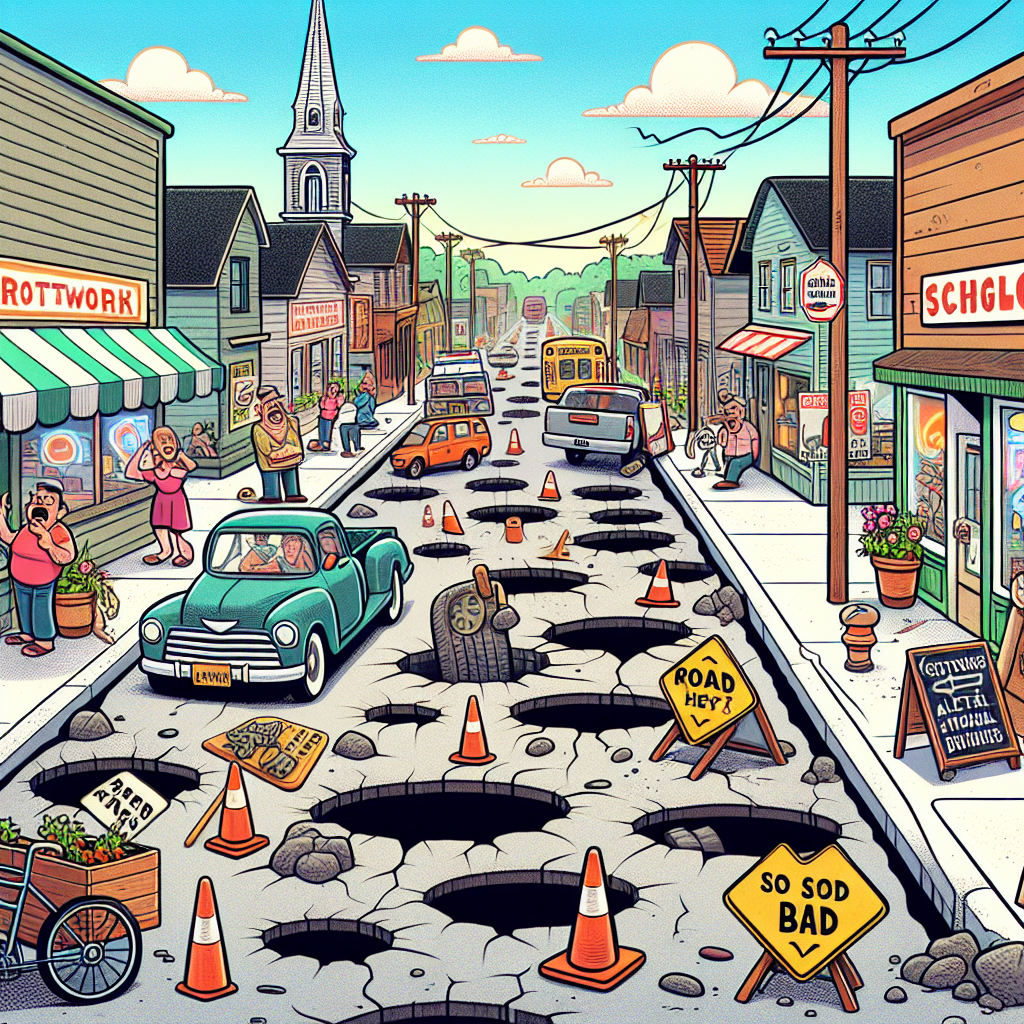Chesterburgh’s Budget Bottleneck: Underfunded Road Repairs Fuel Rising Safety Concerns

Chesterburgh’s recent budget report, released officially on March 14, 2024, at 10:17 a.m., confirms what many have long suspected: the town’s road repair fund has been consistently underutilized amid rising complaints about deteriorating infrastructure. According to figures obtained from Town Treasurer Linda Harrow, the road maintenance budget for fiscal year 2023 was set at $1.2 million. Yet, records show only $738,400 was actually spent, leaving nearly $461,600 unaccounted for or reallocated without clear public explanation.
Residents of Chesterburgh have been raising alarms for months. On January 9, 2024, the Chesterburgh Fire Department logged 17 emergency calls related to accidents caused by potholes or uneven pavement, the highest monthly count in over five years. Fire Chief Marcus Rayner provided the Ledger with these figures directly from dispatch logs, emphasizing the urgency. "We’re seeing more slips, trips, and vehicle damage incidents directly tied to the road conditions, especially in the southeast quadrant of town," Rayner said in a briefing on February 2. Incident reports show one such call on January 15 at 3:42 p.m. involved a rolled delivery van on Maple Avenue, a street notorious for patchwork repairs.
The town’s Public Works Department, headed by Director Janet Woolsey, acknowledges the problem but points fingers at delayed state funds. Speaking on March 2 at a council meeting, Woolsey stated that while the town allocated over $1 million, only $500,000 was actually available after state reimbursements failed to materialize on time. However, documents obtained by the Ledger through a Freedom of Information Act request indicate these state funds arrived incrementally, with $350,000 deposited between November 2023 and January 2024. The discrepancy raises questions about internal management of funds within the municipal budget itself.
Adding to the puzzle, detailed expense reports from October 2023 to February 2024 show significant spending outside road maintenance. For example, $312,000 went toward administrative overhead, including consulting fees for a yet-to-be-completed infrastructure study. At the March 10 town hall meeting, some citizens expressed frustration over what they describe as "broad administrative bloat." Longtime Chesterburgh resident and former council member Henry Caldwell tested the waters, asking, "How do we reconcile this spending with the falling-apart streets under our feet?"
Minutes from the town council's February 28 session reveal debate over reallocating funds toward technology improvements, purportedly to modernize the emergency response system. Councilwoman Rosa Nguyen championed these investments but faced pushback from councilman Jim Bellamy, who argued that "roads are the backbone of our town’s safety, and emergency technology won't fix crumbling bridges or sinkholes." Given the surge in accident-related calls tied to poor pavement, it remains unclear if this strategy aligns with the town’s immediate needs.
On the ground, the impact is visible. A drive along Chesterburgh’s Main Street and surrounding neighborhoods reveals numerous patched potholes, many reappearing mere weeks after repairs. Local business owner Sandra Li of the Downtown Coffee House reports diminished foot traffic, attributing it in part to difficult parking caused by uneven surfaces. "We’re patient, but when customers start avoiding the area because they don’t want to risk their cars, that hits us hard," Li said during a February 18 interview.
In reviewing the town’s 911 call center logs, it’s evident that traffic incidents have steadily risen by approximately 9% over the past two years. While some of this increase may b
